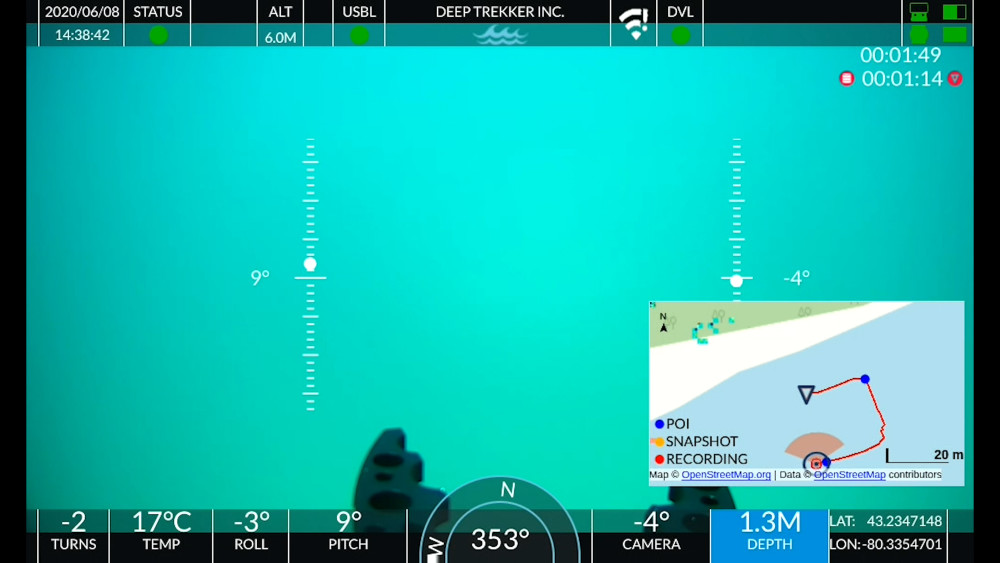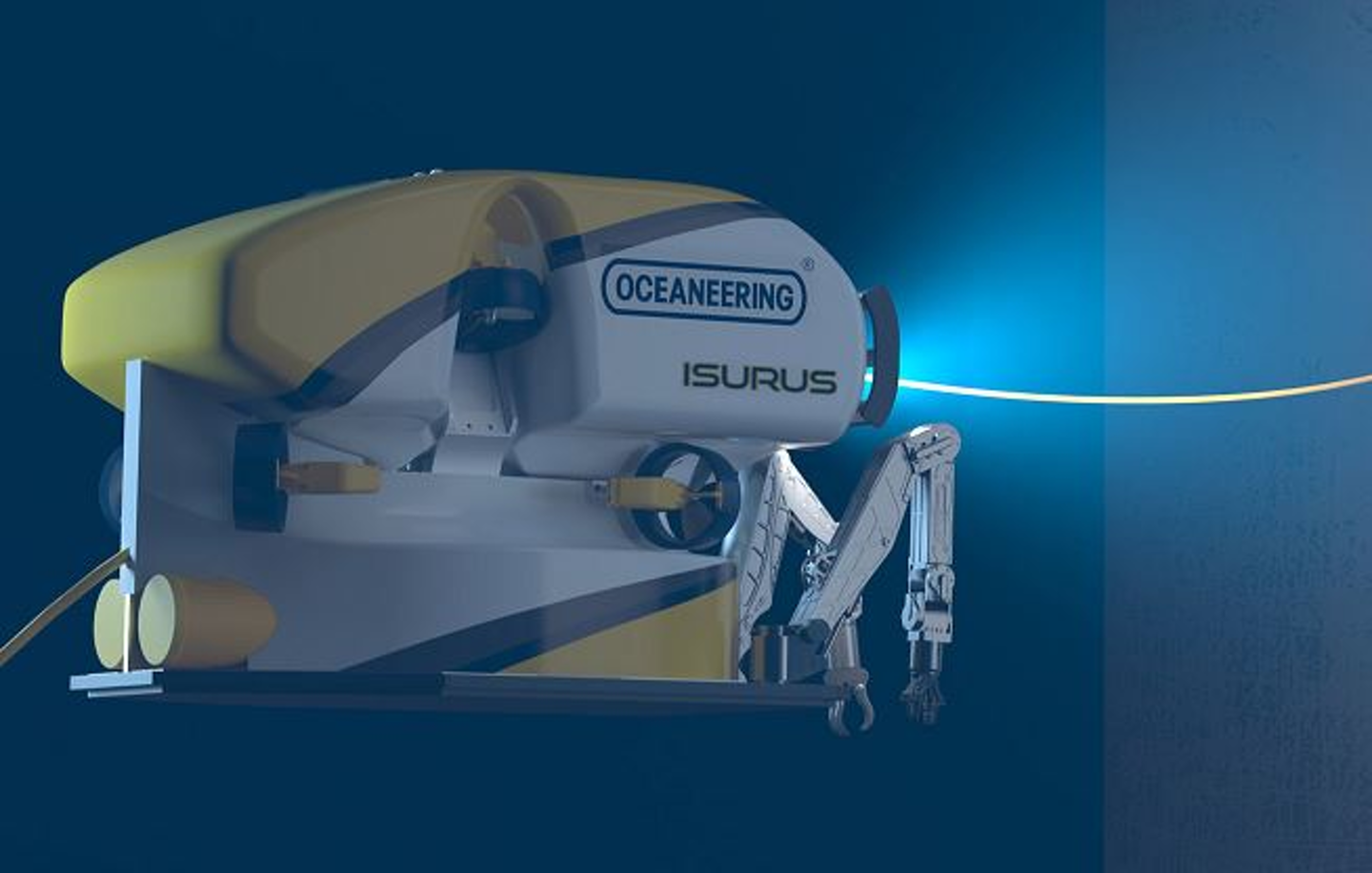Home › Forums › Safety, Survival Courses & Medicals › Safety – ROV. › Safety hat type and colours?
- This topic has 15 replies, 10 voices, and was last updated 15 years, 1 month ago by
Anonymous.
-
AuthorPosts
-
April 7, 2009 at 8:02 am #2370
James McLauchlan
ParticipantThere was a post by JoeBolt in another thread, quoted just below this paragraph, asking about hard hat colours… worth a thread of it’s own it seems……
Is it necessary to bring your own hard hat for a first trip to a North Sea rig?
I’ve been told that unless you have completed 3 trips on the same rig in the North Sea, you are considered to be ‘Green’ and that is the colour of the hard hat the rig will supply you with.
Can anyone confirm this?
Someone was winding you up.
In the North sea there is no set colour for hard hats (Newbie or otherwise) although the USA style aluminium hats are not worth bringing as, in all likelihood, you’ll be asked to take it off and wear a type approved plastic hat.
Weel weel,
I am pretty sure I was supplied with a green hard hat by BP on the magnus a few years back but my memory ain’t what it used to be!!
As a side note read the bottom of this page.
It is out there!!
http://www.petro-canada.ca/en/environsociety/4476.aspxsorry james but there are policies in the north sea as to Hard hat colour.
Shell certainly do (im an ex shell employee) and im sure a few others have the "Green Hat" policy onboard that for the first three trips you have to wear a green hard hat to signify you are new to the platform.
cant remember if any of the drilling contractors run it, thought that transocean do, but it shouldnt matter as if they do, you will be issued a green hat or a green cover for your own hat.
I know dolphin rigs in the North Sea have their own rules, hats are as follows:
First trip offshore – Red (they supply)
first 3 months on a new rig – Green (they supply)
After 3 months – your own hat, company colour
HTHApril 7, 2009 at 8:15 am #22806James McLauchlan
ParticipantWell you have me there.
In my experience, on the boats, this has never come up but I can imagine someone popping up and saying… oh, we have green hats for new guys on our boat! There is always the exception to the rule of course.
In any given situation what difference is the colour of your hat going to make?
If there is no industry standard on this hats for newbies scheme, what’s the reasoning behind it other than to create more confusion offshore? The idea appears to be creating confusion onshore already, as this Forum clearly shows. Once again.. no standard. One company uses red hats for new people, another uses green hats, so… when you move from job to job what colour means what, if anything?
Do people in onshore industry wear different colour hats based on experience, age, religion?
April 7, 2009 at 8:33 am #22807deepseacon
ParticipantI have only ever worn a White hard hat in since 1985 until my last contract on the Saipem 7000 were i was given a green one as i had
never been on that barge before.For me there is a negative point about dark colored hard hats they are not easy too see a night time.
I always take myself a White hard hat were ever i go.
Although Sonsub did also have some nice Orange ones on there jobs recently but i never used one.
April 7, 2009 at 8:34 am #22808mind-when-this-was-fields
ParticipantIt seems to be only on platforms as I have never seen it on BP jobs on vessels.
But the guy did say working on a rig, which is a whole different set of rules!!
But it appears the system changes depending in what company you work for..
You’d think it would be easier to set an industry standard….
Exactly the reason I try to avoid rig work 😀April 7, 2009 at 8:40 am #22809Rons_ROV_Links
ParticipantIn 2000 I was in Canada offshore Newfoundland and we had plastic hats (white) with a foam ring on the inside.

Some companies in these days require you to wear hats with a short flap (or what ever its called) on the front so you have a better few upwards in case of hoisting situations.
April 7, 2009 at 11:12 am #22810Anonymous
GuestDo people in onshore industry wear different colour hats based on experience, age, religion?
Don’t forget personality 😉
If you were to walk around one of Transocean rigs, you would see something that might puzzle you. Most of the workers have three stickers on their hard hats. One says “Start to Understand Me.” The other two are colored dots. What is this all about? The colored dots are there to tell co-workers about the personality under the hat. The company believes that workers are better able to understand each other and get along if they know the personalities of the people with whom they have to work.
April 7, 2009 at 12:20 pm #22811James McLauchlan
ParticipantThird party stickers on PPE?
A close look at the manufacturer guidelines for safety hats says……… 🙄
April 7, 2009 at 12:46 pm #22805Ray Shields
ParticipantThe Transocean coloured dots thing has been about for a while. The idea is that you do a test and it tells you what colour dots to put on the sticker. This then tells people what kind of personality you have and how you are best talked to/dealt with.
God help you if you had to deal with someone with 2 red dots!
The scheme is now on hold as they have been taken to court in the States for breach of copyright or something.
James obviously has done little rig time 🙂
Coloured hats started some years back. It was a Step Change in Safety thing. The Green hat was to signify someone who was inexperienced on the platform so others knew when someone was new straight away.
They have since modified it so that the REALLY GREEN people have a yellow cover, then after you are a bit new, a Green hat then back to normal.
http://www.stepchangeinsafety.net/stepchange/News/StreamContentPart.aspx?ID=2354
Its a new scam by a company that made millions of Green Hard hats by mistake, Im sure!
April 7, 2009 at 1:20 pm #22812James McLauchlan
ParticipantIts a new scam by a company that made millions of Green Hard hats by mistake, Im sure!
😀 😀
April 7, 2009 at 1:28 pm #22813Anonymous
GuestHere the full story related to OSHA standards
Head Protection
Protecting employees from potential head injuries is a key element of any safety program. A head injury can impair an employee for life or it can be fatal. Wearing a safety helmet or hard hat is one of the easiest ways to protect an employee’s head from injury. Hard hats can protect employees from impact and penetration hazards as well as from electrical shock and burn hazards.
Employers must ensure that their employees wear head protection if any of the following apply:
Objects might fall from above and strike them on the head;
They might bump their heads against fixed objects, such as exposed pipes or beams; or
There is a possibility of accidental head contact with electrical hazards.
Some examples of occupations in which employees should be required to wear head protection include construction workers, carpenters, electricians, linemen, plumbers and pipefitters, timber and log cutters, welders, among many others. Whenever there is a danger of objects falling from above, such as working below others who are using tools or working under a conveyor belt, head protection must be worn. Hard hats must be worn with the bill forward to protect employees properly.In general, protective helmets or hard hats should do the following:
Resist penetration by objects.
Absorb the shock of a blow.
Be water-resistant and slow burning.
Have clear instructions explaining proper adjustment and replacement of the suspension and headband.
Hard hats must have a hard outer shell and a shock-absorbing lining that incorporates a headband and straps that suspend the shell from 1 to 1 1/4 inches (2.54 cm to 3.18 cm) away from the head. This type of design provides shock absorption during an impact and ventilation during normal wear.Protective headgear must meet ANSI Standard Z89.1-1986 (Protective Headgear for Industrial Workers) or provide an equivalent level of protection. Helmets purchased before July 5, 1994 must comply with the earlier ANSI Standard (Z89.1-1969) or provide equivalent protection.
Types of Hard Hats
There are many types of hard hats available in the marketplace today. In addition to selecting protective headgear that meets ANSI standard requirements, employers should ensure that employees wear hard hats that provide appropriate protection against potential workplace hazards. It is important for employers to understand all potential hazards when making this selection, including electrical hazards. This can be done through a comprehensive hazard analysis and an awareness of the different types of protective headgear available.
Hard hats are divided into three industrial classes:
Class A hard hats provide impact and penetration resistance along with limited voltage protection (up to 2,200 volts).
Class B hard hats provide the highest level of protection against electrical hazards, with high-voltage shock and burn protection (up to 20,000 volts). They also provide protection from impact and penetration hazards by flying/falling objects.
Class C hard hats provide lightweight comfort and impact protection but offer no protection from electrical hazards.
Another class of protective headgear on the market is called a “bump hat," designed for use in areas with low head clearance. They are recommended for areas where protection is needed from head bumps and lacerations. These are not designed to protect against falling or flying objects and are not ANSI approved. It is essential to check the type of hard hat employees are using to ensure that the equipment provides appropriate protection. Each hat should bear a label inside the shell that lists the manufacturer, the ANSI designation and the class of the hat.Size and Care Considerations
Head protection that is either too large or too small is inappropriate for use, even if it meets all other requirements. Protective headgear must fit appropriately on the body and for the head size of each individual. Most protective headgear comes in a variety of sizes with adjustable headbands to ensure a proper fit (many adjust in 1/8-inch increments). A proper fit should allow sufficient clearance between the shell and the suspension system for ventilation and distribution of an impact. The hat should not bind, slip, fall off or irritate the skin.Some protective headgear allows for the use of various accessories to help employees deal with changing environmental conditions, such as slots for earmuffs, safety glasses, face shields and mounted lights. Optional brims may provide additional protection from the sun and some hats have channels that guide rainwater away from the face. Protective headgear accessories must not compromise the safety elements of the equipment.
Periodic cleaning and inspection will extend the useful life of protective headgear. A daily inspection of the hard hat shell, suspension system and other accessories for holes, cracks, tears or other damage that might compromise the protective value of the hat is essential. Paints, paint thinners and some cleaning agents can weaken the shells of hard hats and may eliminate electrical resistance. Consult the helmet manufacturer for information on the effects of paint and cleaning materials on their hard hats. Never drill holes, paint or apply labels to protective headgear as this may reduce the integrity of the protection. Do not store protective headgear in direct sunlight, such as on the rear window shelf of a car, since sunlight and extreme heat can damage them.
Hard hats with any of the following defects should be removed from service and replaced:
Perforation, cracking, or deformity of the brim or shell;
Indication of exposure of the brim or shell to heat, chemicals or ultraviolet light and other radiation (in addition to a loss of surface gloss, such signs include chalking or flaking).
Always replace a hard hat if it sustains an impact, even if damage is not noticeable. Suspension systems are offered as replacement parts and should be replaced when damaged or when excessive wear is noticed. It is not necessary to replace the entire hard hat when deterioration or tears of the suspension systems are noticed.April 7, 2009 at 3:06 pm #22814Ray Shields
ParticipantOr for UK and European standards of hard hat, they should meet the specifications of BS EN 397. Google it if yr interested, easier than doing a huge cut n paste job 😉
Most companies also use the standard that a hard hat should be replaced either after 2 years from issue, 5 years after manufacture (manufacture date should be marked inside helmet) or if it suffers damage or a severe blow.
April 7, 2009 at 3:28 pm #22815T-Boy
ParticipantI have seen Orange ones used for people on Rigs that are visitors/newcomers, but that is away from the UK sector.
My lucky hat is a yellow yankee pith helmet stylee with a few bits of Solas silver tape for vis if I fall over the wall! Also a good shape for bailing out a boat 😆
In the GoM they were wearing tin hats as well as cowboy style H/hats..very fetching 😯 Couldn’t tell what colour they were as they had so many layers of stickers on them 😆
April 7, 2009 at 4:29 pm #22816rigwash
Participantwell a friend of mine at Sonsub Singapore told me a while back, that there are lots of Brown hatters there now.
is this connected with what you guys are on about?
April 7, 2009 at 6:54 pm #22817ROVRatt
Participantwell a friend of mine at Sonsub Singapore told me a while back, that there are lots of Brown hatters there now.
😀 😀
But seriously, the rigs I have worked on require anyone new to that specific rig, even if he is a company man or supervisor, to wear a green hat. This is not for purposes of humiliation or initiation, but for the persons familiar with the rig to be able to identify personnel who may have a problem identifying hazards on the specific rig. Everyone else wears white hats.
The dot colours on the hat represent the personality type of the person wearing the hat which is determined by a test run by a group called Equilibria. http://www.equilibria.vg These tests are copyright and have to be administered by the group. The personality type determines how persons should approach and treat the person. Actually quite scientific and useful.
April 7, 2009 at 7:51 pm #22818rovnumpty
ParticipantAh well now, as per everything else offshore, this is entirely open to interpretation.
I was on a rig coming out of invergordon a few years back. It had been in there for a while, so, theoretically, everyone should have had a green hat.
Funilly enough, very few of the Transocean people were issued with green hats, but all us third party scum got a roasting if we didn’t have a green hat.
They also had a bit of a star trek moment, as the few transocean people who did have green hats ( all of whom were brand new offshore) went through some ‘time dilation’ thing where 6 months were compressed down to a single trip.
Doesn’t look good to a client, you see, if there are lots and lots of transocean green hats going about.
Course, no one gives a monkeys about us ROV scum onboard a rig, so we would be wearing jobby brown if they thought they could get away with it.
-
AuthorPosts
- You must be logged in to reply to this topic.



